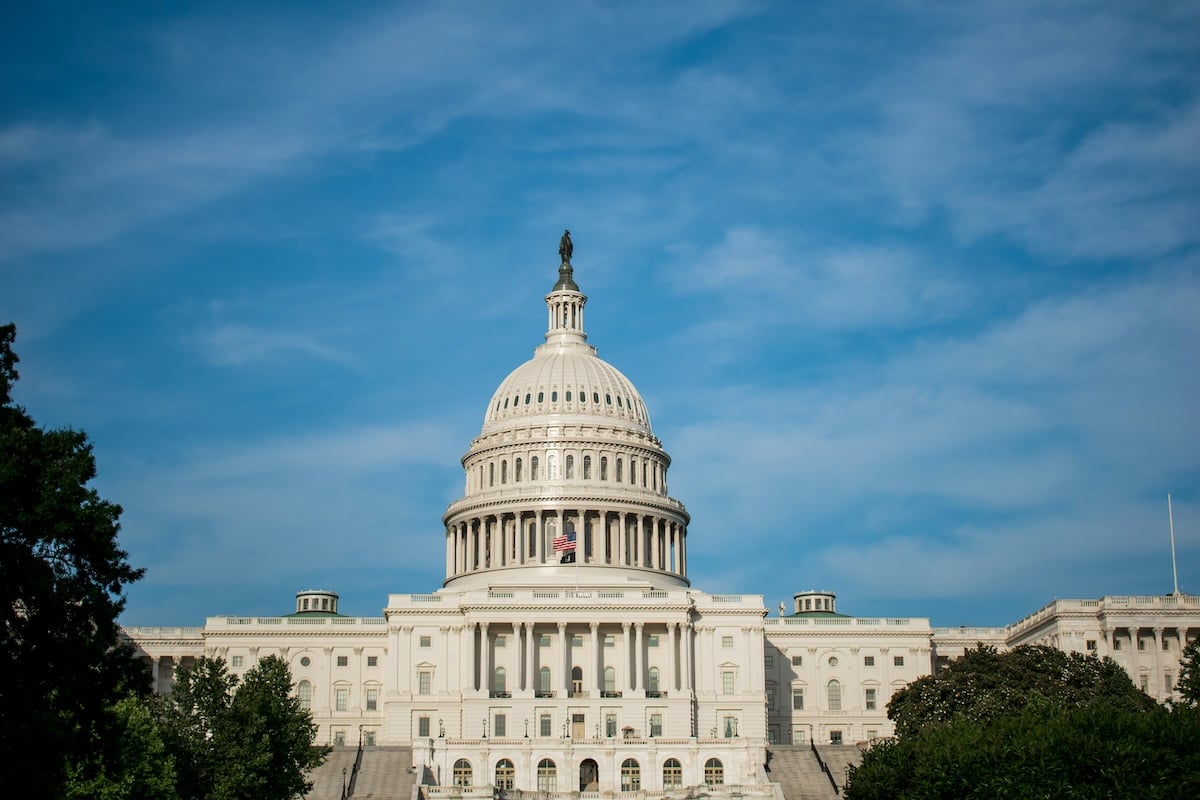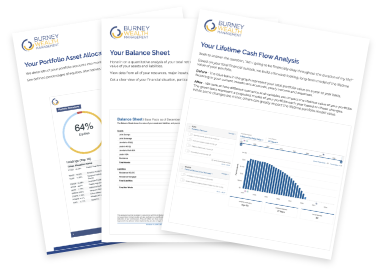Understanding the One Big Beautiful Bill Act (OBBBA): What High Net Worth Families Need to Know

Imagine trying to lift a stack of tax law that’s nearly as thick as a phone book (remember those?). Welcome to the world of the One Big Beautiful Bill Act—affectionately known as the OBBBA. This latest tax legislation is so hefty, it could give the famous Affordable Care Act a run for its money in a page-count contest, and it leaves the Tax Cuts and Jobs Act (TCJA) looking like a slim paperback by comparison.
But don’t worry—you don’t have to read all 900 pages to understand what matters most. We’ve done the heavy lifting for you. Let’s break down what’s inside the OBBBA, why it’s making headlines, and—most importantly—what it means for you and your family’s wealth. Our goal is to prioritize the items we believe are most important for individual high-net-worth investors, so while some details are outlined below, many specifics are left out that are not relevant for this post and audience.
How Big Is the OBBB Compared to Other Major Tax Laws?
Before diving into the details of the One Big Beautiful Bill Act (OBBBA), it’s helpful to put its scale in perspective. Tax legislation in the U.S. is often measured by its sheer size—literally, the number of pages in the bill. Here’s how the OBBBA stacks up:
| Legislation | Number of Pages |
| One Big Beautiful Bill Act (OBBBA) | ~900 pages* |
| Inflation Reduction Act (IRA, 2022) | 755 pages[1] |
| Tax Cuts and Jobs Act (TCJA, 2017) | 429 pages[2] |
| Affordable Care Act (ACA, 2010) | ~906 pages |
*The OBBBA’s exact page count may vary slightly depending on formatting and amendments, but it is among the largest tax bills in recent history, rivaling the ACA and significantly longer than the TCJA and IRA.
What Is the One Big Beautiful Bill Act (OBBBA)?
The OBBBA is the latest comprehensive tax reform package passed by Congress and signed by President Trump on July 4, 2025. Its primary purpose is to extend many of the individual and business tax provisions from the 2017 Tax Cuts and Jobs Act (TCJA), which were set to expire at the end of 2025, while introducing new measures aimed at both revenue generation and tax relief for families and businesses[3].
A Summary of Key Themes in the OBBBA
- Permanent Extension of 2017 Tax Cuts in the TCJA: Set to expire at the end of this year, many of the tax cuts and credits for individuals and businesses created by the TCJA are now permanent or extended well beyond their original expiration dates[3]. The current seven income tax brackets were made permanent.
- New and Modified Tax Credits: The bill introduces or enhances credits for families and businesses. The most impactful items include an expanded child tax credit, limits on taxation for tips and overtime, additional deductions for those over age 65, and a new auto loan interest deduction for US made cars.
- Revenue Raisers: To offset the cost of extending tax cuts, the OBBBA includes measures such as tightening deductions, closing loopholes, and introducing new minimum tax requirements for certain high-income individuals and large corporations[4].
- Estate and Gift Tax Adjustments: The higher exemption levels for estate and gift taxes, set by the TCJA, are extended, providing continued planning opportunities for affluent families.
- Inflation Adjustments: Many tax thresholds and credits are now indexed to inflation, helping families maintain purchasing power over time.
Most Relevant Items for High-Net-Worth Investors
- Increased SALT Deduction Limit of $40,000 (up from $10,000). A major gripe of the 2017 Tax Cuts and Jobs Act (TCJA) was that it limited taxpayers that itemize to deducting only $10,000 of their State & Local taxes. Effective 2025-2029 a new, $40,000 limit applies to both Single and Married Filing Jointly taxpayers. The deduction is limited as Adjusted Gross Income (AGI) exceeds $500,000 and is fully phased out at $600,000. Good news! Unlike the previous version, the $40,000 will be indexed at 1% annually.
- Larger Lifetime Estate and Gift Tax Exemption of $15 million per person. Starting in 2026, wealthy families can gift and bequest a significant sum to heirs tax free. The amount is still portable, meaning couples can join forces for a whopping $30 million of lifetime and at-death transfer of wealth. The previous exemption of $13.9 million was set to be cut in half at the end of 2025, so this large increase and permanent extension is a welcomed pivot.
- Charitable Deduction for Non-Itemizers of $1,000 (single) and $2,000 (MFJ). Starting in 2026, those who don’t itemize (most of the population) will be able to deduct their charitable contributions up to the above limits. This was previously allowed during the COVID pandemic (at much smaller amounts) but expired. Unlike its previous version, this deduction is permanent.
- A 0.50% AGI Floor for Itemizers to Deduct Charitable Contributions. Starting in 2026, those who are charitably inclined and itemize will no longer be allowed to deduct the first 0.50% of AGI worth of charitable contributions. For example, a married couple with an AGI of $250,000 won’t be able to deduct charitable contributions until their contributions exceed $1,250.
- An Additional $6,000 Deduction for Taxpayers Over 65. Starting in 2025, each taxpayer 65 and older is eligible for an additional $6,000 deduction (per person), regardless of whether or not they itemize. This deduction is phased out by 6% for income levels above $150,000 MFJ and $75,000 for single filers, which fully phases out around $250,000 and $175,000 respectively. This additional deduction expires on January 1, 2029. This was meant to replicate the “no tax on Social Security” that was a key theme of President Trump’s campaign.
Why Does the OBBB Matter for Mass Affluent Families?
- Tax Planning Certainty
With the extension of the TCJA’s lower rates and higher exemptions, families can plan (at least for now) with more confidence, knowing that key provisions won’t expire in the near future. Strategies like Roth conversions can now be modeled several years into the future with more clarity.
- Opportunities for Wealth Transfer
The continued high estate and gift tax exemptions mean families can transfer more wealth to the next generation with less tax impact, but these rules may change with future legislation, so proactive planning is essential.
- Proactive Planning
Some deductions and strategies previously available may now be limited or phased out, especially for higher-income households. It’s important to review your tax situation annually to ensure you’re optimizing your strategy under the new rules.
What Should You Do Next?
- Review Your Tax Plan: Work with your advisor to assess how the OBBBA affects your family’s tax situation.
- Consider Wealth Transfer Strategies: Take advantage of the current estate and gift tax rules while they’re in place.
- Revisit Charitable Giving Strategies: Given the significant changes to charitable giving, it might make sense to consider bunching deductions to avoid the 0.50% of AGI floor.
- Stay Informed: Tax laws can change quickly. Regularly review your plan to adapt to new legislation.
Final Thoughts
Politics aside, the OBBBA is a sizeable piece of legislation, both in its size and its impact. While debate will ensue around its long-term impact on the deficit, mass affluent families will need to explore opportunities and some new challenges. Proactive planning and regular consultation with your wealth advisor are the best ways to ensure you benefit from the changes and protect your family’s financial future.
[1] H.R.5376 - Inflation Reduction Act of 2022
[3] Text - H.R.1 - 119th Congress (2025-2026): One Big Beautiful Bill Act | Congress.gov | Library of Congress
[4] “One Big Beautiful Bill Act” House GOP Tax Plan: Details and Analysis
The Burney Company is an SEC-registered investment adviser. Burney Wealth Management is a division of the Burney Company. Registration with the SEC or any state securities authority does not imply that Burney Company or any of its principals or employees possesses a particular level of skill or training in the investment advisory business or any other business. Burney Company does not provide legal, tax, or accounting advice, but offers it through third parties. Before making any financial decisions, clients should consult their legal and/or tax advisors.



